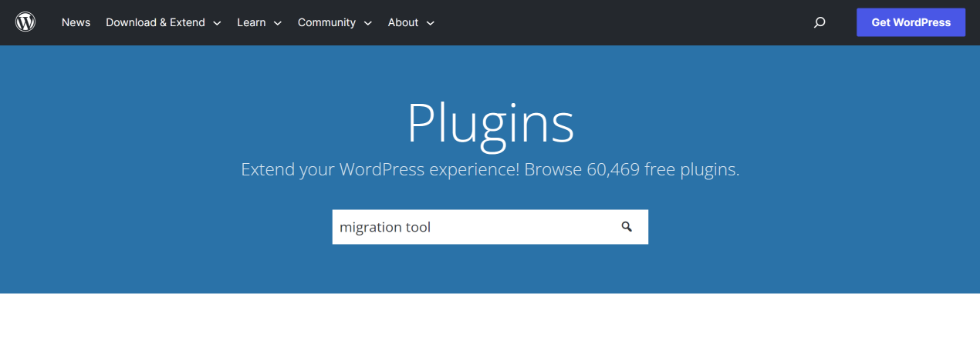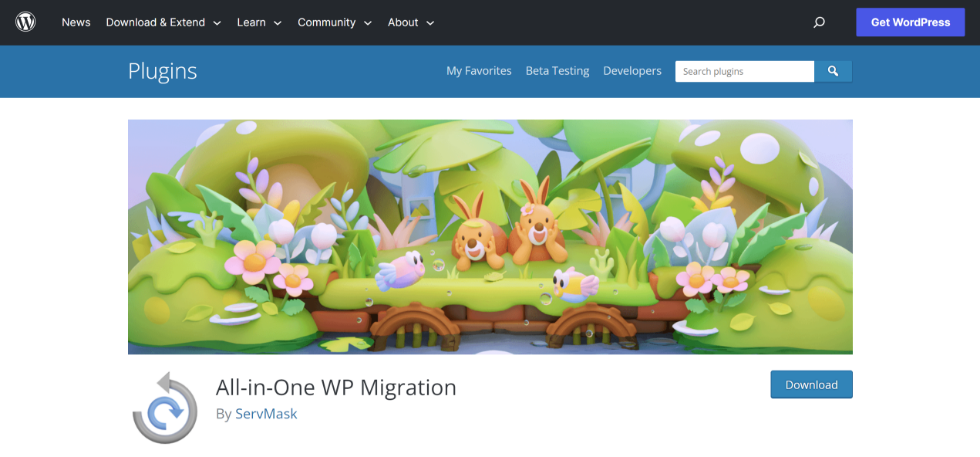Today, I’ll delve into a crucial aspect of WordPress website management: migrations. “Migrating” a website means transferring a website from one hosting environment to another. WordPress migration tools are designed to simplify the migration process for the user. If you are wondering whether you need a tech expert to migrate your clients’ WordPress websites or whether you can do it yourself with automated migration tools, you are in the right place.
Benefits of Using a WordPress Migration Tool
1. Ease of use
The good news is that these tools are usually easy to use, and they don’t require advanced technical skills.
Most migration tools have a user-friendly interface and clear instructions. On top of that, they also provide step-by-step guides and support forums to help you navigate through the migration process.
Although these tools are designed for non-technical users, you’ll still need some basic technical knowledge to ensure a successful migration. Users should have a basic grasp of WordPress, including how to install and activate plugins. You also need to understand the hosting environment — you may need to export/import databases, transfer files, or ensure compatibility between the hosting and migration tools.
2. Time-saving
When they work as intended, these tools are a real time-saver, allowing you to swiftly migrate clients’ websites. This speed can be a real boon when your agency has a lot on its plate. This is especially useful if you have tight deadlines or need to migrate multiple sites at once.
The major advantage of using a migration tool is that it quickly transfers everything the website needs, such as the database, themes, plugins, and media files. This comprehensive tool assists users in a seamless migration without losing any data or information.
To sum it up, even if you’re not super technical, you can still use an all-in-one migration tool. Just remember that you’ll need some knowledge to do it right.

Risks of Using a WordPress Migration Tool
While there are numerous benefits to using a WordPress migration tool, I have interviewed WLA’s developers about potential risks. Readers should be aware of them before deciding to use one.
1. Data loss and corruption
One of the most significant risks is losing or corrupting data during the migration process. As our senior developer Natalia Poguzhelskaya suggests, this is especially true for complex sites with custom coding or large databases, as all-in-one tools may struggle to handle those elements correctly.
2. Compatibility
Another risk to consider is compatibility issues between the migration tool and the website’s hosting environment. If they don’t work well together, the migration could fail, resulting in data loss and the site being temporarily offline.
Custom configurations and settings specific to your client’s website, such as custom post types or custom fields, may not be seamlessly transferred by migration tools. This could require an additional manual effort from a developer to recreate or reconfigure those elements on the new site.

How to choose between manual and automated migration
When migrating WordPress websites, it’s essential to carefully weigh the potential benefits of using a WordPress migration tool against the risks involved. While these tools offer convenience and time-saving advantages, there are situations where manual migration might be better.
- The size of the website – Migration tools are generally capable of handling sizable migrations but larger websites with massive databases may pose challenges.
- Custom coding or unique features – The more unique the website, the more likely it is that the one-size-fits-all solution will get tripped up.
- Complex or large databases – with greater size and complexity, the risk of data loss and corruption increases, and makes manual migration a safer bet.
- Compatibility – this is a rare issue, but some hosting providers are blocking such plugins and you have to check before using it.
- Extra setup – sometimes using these tools require additional configurations for the website and that can consume your precious time.
Choosing a high-quality migration tool
Not all migration tools are created equal. Some may have limitations, leading to incomplete transfers of your site’s elements. To avoid this, it’s crucial to thoroughly test the website. Here at WLA, our developers test websites both before and after migration. The checklist before migrating a website involves updating all the plugins and turning off all the temporary ones to prevent slowing down the site. An already migrated website should also pass the QA stage. Here is the complete guide to the fixes and checks to perform after migration.
Some tools may also have security vulnerabilities. Make sure the tool encrypts your data when transferring it, handles your login information safely, checks for any harmful content, and lets you control who can use it. Also, pick a tool that gets regular updates and has good support to fix any security problems that may come up. It’s essential to research and choose a tool with strong security features to protect your site. At WLA, we have had excellent results over several years using the aptly named All-in-One WP Migration, which has been extensively tested and has a strong reputation as a safe, reliable, and adaptable solution.
In summary, the decision to use a WordPress migration tool for a website requires careful consideration. Manual migration offers customization and precision but requires technical expertise and time. On the other hand, automated migration tools provide time savings and ease of use but carry risks. These risks include potential data loss, compatibility issues, limitations in transferring custom configurations, and varying levels of security. Thorough testing, selecting a reliable tool, and understanding basic technical knowledge are crucial for a successful migration. Assessing the unique requirements of the website and balancing these factors will help you to make an informed decision.



